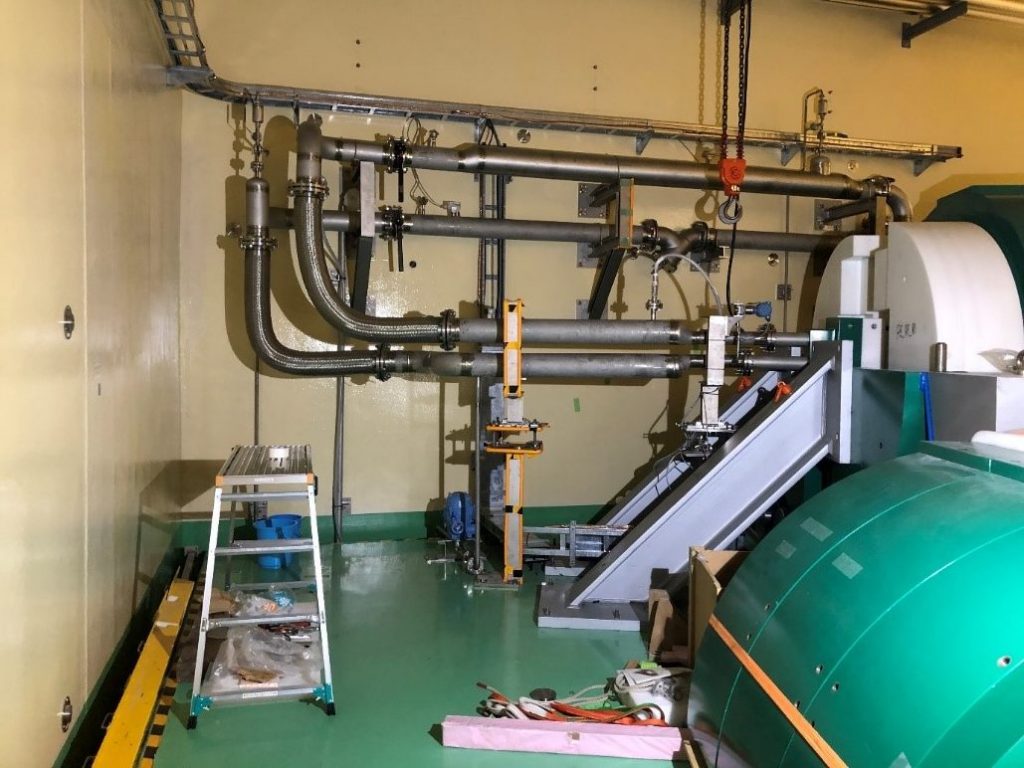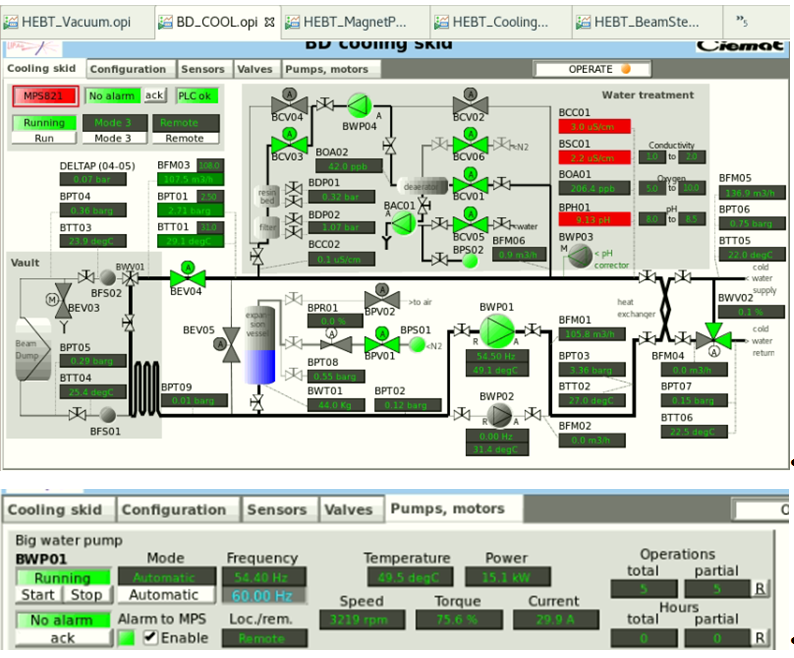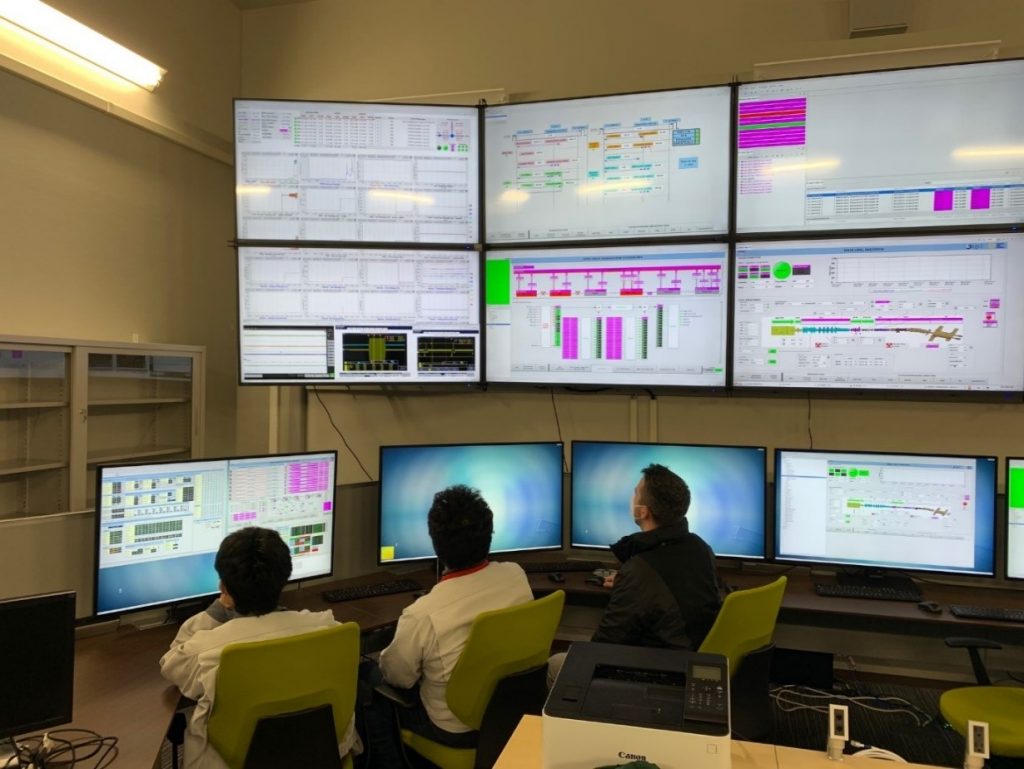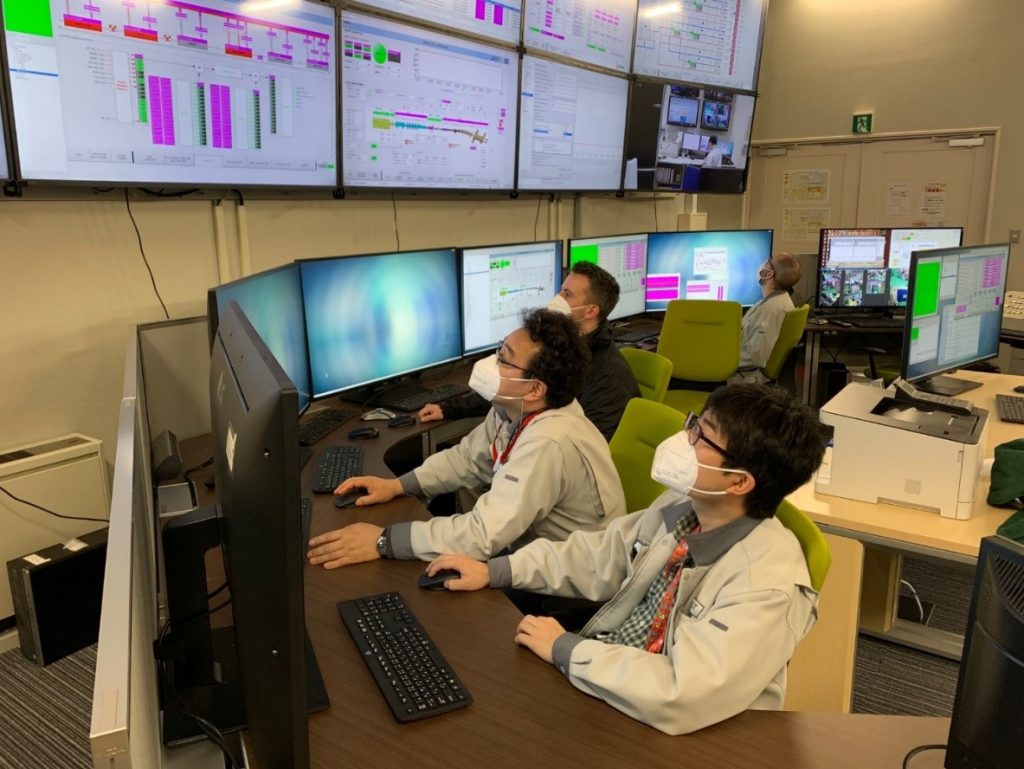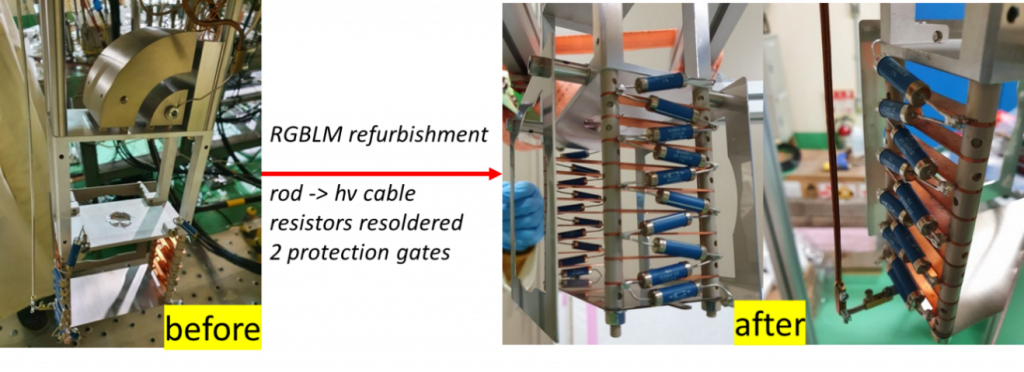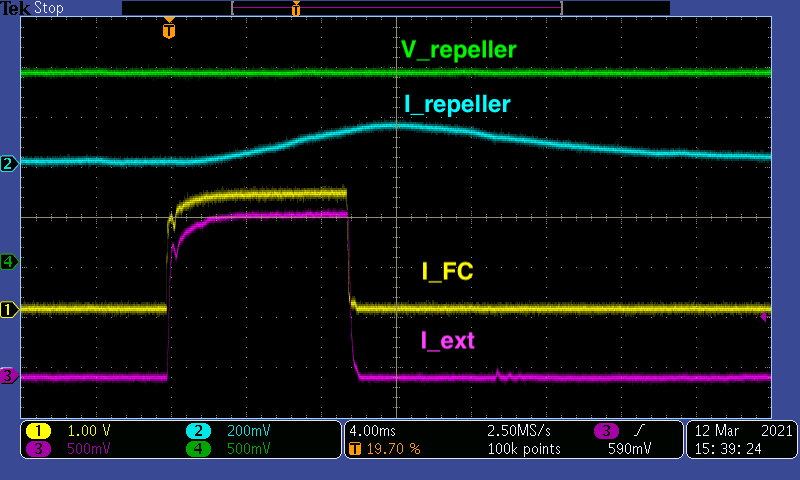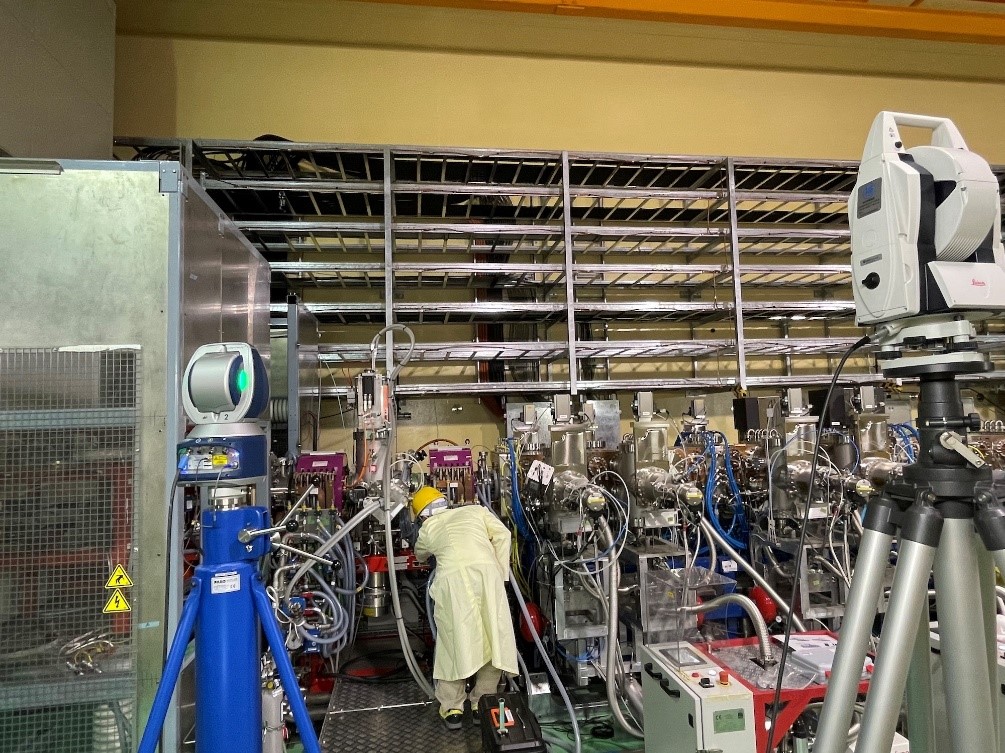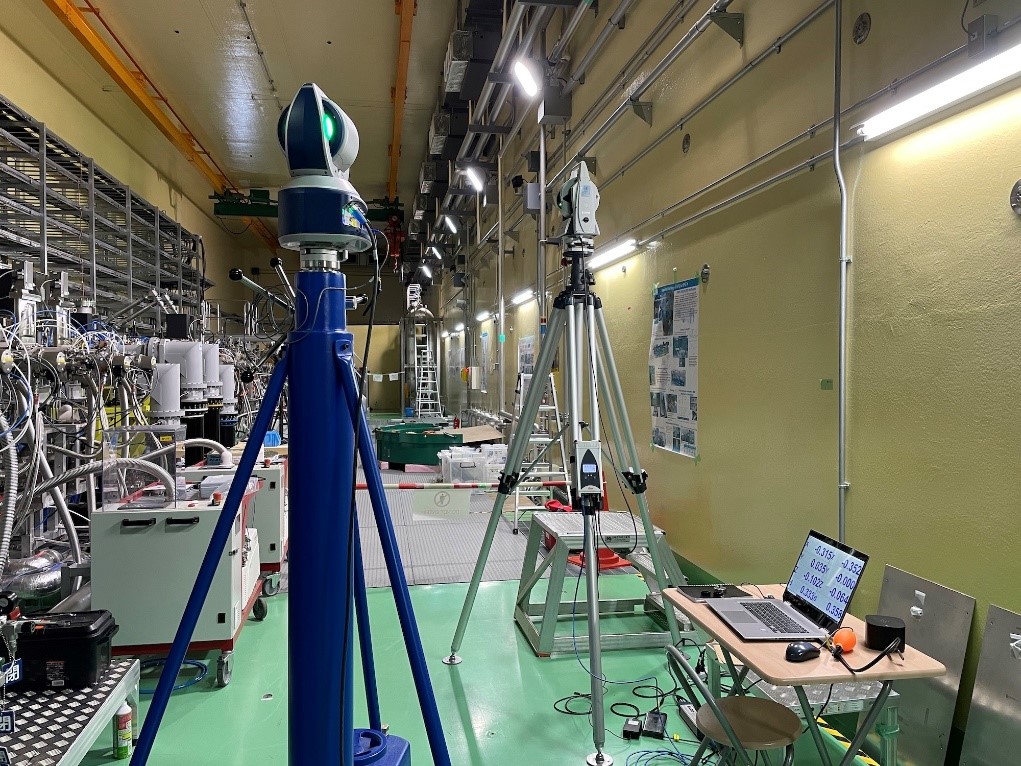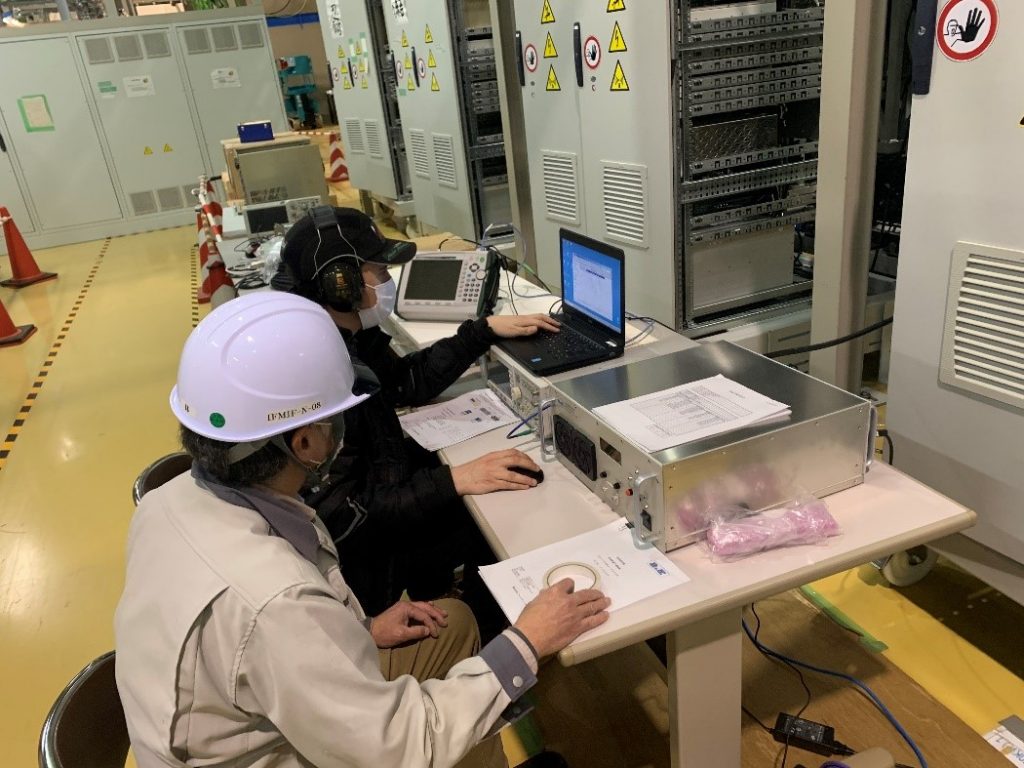Injector
The deuteron beam extraction using 6mm Plasma Electrode was paused to fix a sign of corrosion that occurred at the cooling panels in the cubicles of the Power Supplies of the LEBT (Low Energy Beam Transport). The cubicles are located in the RF area, far from the accelerator vault. The corroded part was fixed and an identical cooling panel is being prepared for substitution in the near future. The intervention will be completed on Monday next week and injector conditioning will be resumed.
In VAC02 sector vacuum chamber (placed after the LEBT, at the RFQ entrance) the installation of the new turbo pump and scroll pump was successfully completed.
Radio Frequency (RF) System and RFQ cavity
After the individual tests carried out in the last weeks, the new predrivers have been installed on all RFQ-RF chains. Minor adjustment of the LLRF output level will be necessary.
RF injection in the RFQ cavity was paused at the end of last week as the quality of the cooling water in the RF skid experienced a quick degradation in resistivity. A quick recovery action is on-going and new ion exchange resins should be delivered end of this week for a replacement planned next week. RF injection in RFQ cavity is planned to resume next week.
In the cooling line of one of two Solid State Power Amplifiers (SSPA) the flow meter was disassembled, inspected and cleaned. It was confirmed that a part of flow meter was broken.
In the RFQ cavity all the cryopump groups were regenerated, however one compressor showed higher temperature (~17K) and was stopped. Despite maintenance was carried out on site by the supplier very recently, they suggest to replace a gasket. Analyses are carried out to understand the issue and take actions.
In the RFQ cooling skid the PH of water resulted unexpectedly low, 5.5, which probably indicates a degradation of the demineralizing beds. An intervention was performed this week to check the filters, and two flowmeters. Additionally the RFQ skid was completely drained and refilled with ultrapure water. The PH is now 7.2. Sample of water will be measured weekly until the summer maintenance.
Although a deep maintenance was carried out on the cooling systems in last year long term maintenance, a deep analysis of the recent events is carried out: countermeasures are taken immediately to operate safely the system and corrective measures are planned for the next long term maintenance (starting August 2021).
Medium energy Beam Transport (MEBT) and MEL (MEBT Extension Line)
MEBT vacuum is stable at 1e-9 mbar. MEL vacuum was fully recovered after the intervention to install the RGBLM (Residual Gas Bunch Length Monitor) sensor. In the MEBT skid one conductivity sensor and filter were replaced.
Beam Dump
The functional check of the oxygen control loop by monitoring the decrease in oxygen concentration under water circulation (bypassing the BD cartridge itself in the vault) is on-going. The remote sessions with CIEMAT for commissioning and debugging the BD skid control system are on-going (daily remote sessions are carried out!).
Beam Instrumentation
After completion of the installation of the RGBLM sensor in the MEL, the High Voltage checks in vacuum are on-going.
Control System
The new RFQ couplers temperature measurement system was integrated into the RFQ LCS (Local Control System) with the remote support of INFN and operational ?
IT tools for allowing remote participation for RFQ conditioning above 10% of Duty Cycle and for the beam operation are under preparation.
Disclaimer: the information reported is not meant to be technically complete and doesn’t cover all the activities currently carried out on LIPAc.



